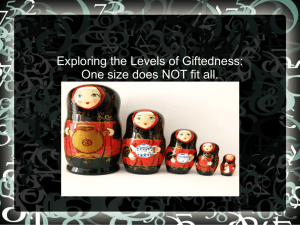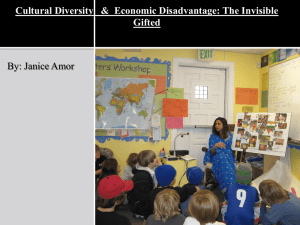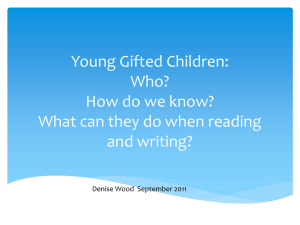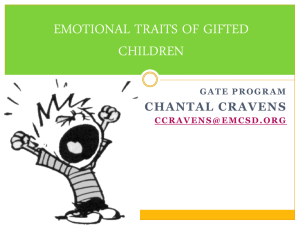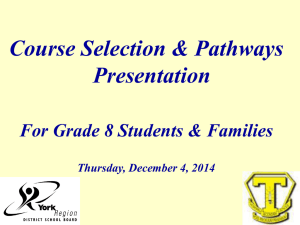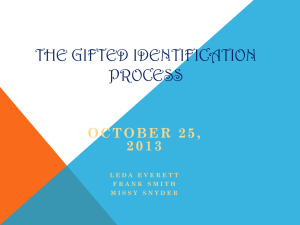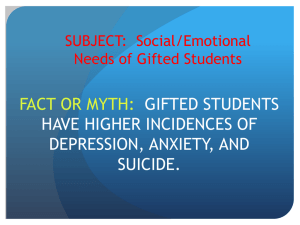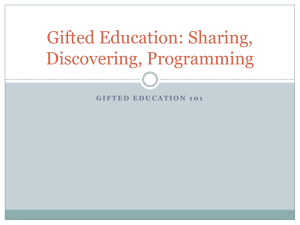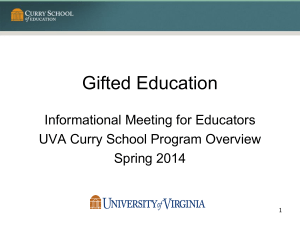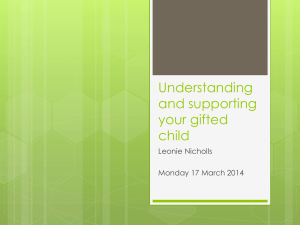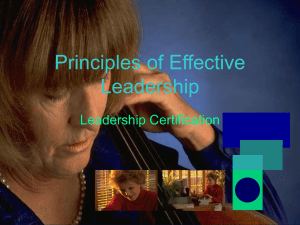Differentiated Instruction: Gifted Students
advertisement
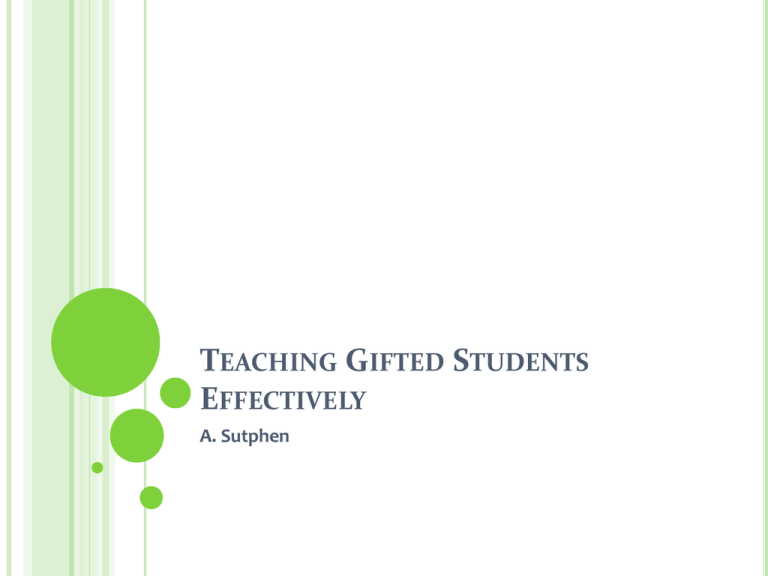
TEACHING GIFTED STUDENTS EFFECTIVELY A. Sutphen INTRODUCTION In the past, gifted students were described as children who had above average IQs, high test scores, and good grades. Cognitive science and developmental psychology have changed the way giftedness is understood. Howard Gardner’s Multiple Intelligence Theory holds that people can be “intelligent” in many ways. Teachers often encounter problems keeping gifted students challenged and motivated in a heterogeneous classroom. Consequently, some gifted students perform poorly on tests and have low grades. If implemented properly, differentiated instruction is a good methodology that should keep students engaged and learning, whether they are gifted, average, or weaker students. MYTHS ABOUT GIFTED STUDENTS Gifted children are smart, so they can get by on their own. Gifted students excel in all school subjects. Some gifted students can excel in all subjects, but many others do not, and some have learning disabilities. Gifted students are a homogeneous group. Students who aren’t challenged can lose interest and motivation. Just as with any group of students, gifted students differ in interests, abilities, temperaments, etc. Differentiated instruction is recommended even in gifted classes. All children are gifted. While all children can learn and have areas of strength, some learners are able to learn more quickly and are able to do higher level work than others. (Stepanek, 1999) TIPS AND SUGGESTED INSTRUCTIONAL STRATEGIES FOR TEACHING GIFTED STUDENTS Establish high standards. Pose questions and design projects that encourage high-order thinking. Offer individual investigations, tasks, and projects that allow student choice. Let students express their learning in a variety of ways that capitalizes on their creativity. Introduce learning centers. Consider well-designed academic competitions. Find mentors and other people in the “real world” to inspire them. Incorporate flexible student grouping. Don’t push gifted students to be tutors. Note: All but the last of these suggestions are applicable in any classroom and for any student. TEACHING GIFTED STUDENTS IN MY CLASSROOM For all of my students, I incorporate tasks that require higher-order thinking skills. This benefits all students, including advanced students. I have high expectations of all students, including advanced students and encourage students to adopt similar expectations of themselves and their peers. I allow students to have choices in projects. BIBLIOGRAPHY Siegle, D. & McCoach, D. B. (2005). Making a difference: motivating gifted students who are not achieving. The H.W. Wilson Company. Stepanek, J. (1999). Meeting the needs of gifted students: differentiating mathematics and science instruction. Portland: Northwest Regional Educational Laboratory. Winebrenner, S. (2001). Teaching gifted kids in the regular classroom. Minneapolis: Free Spirit Publishing. Creative Strategies for Teaching Language Arts to Gifted Students (K-8) http://www.cec.sped.org/AM/Template.cfm?Section=Home&CON TENTID=4225&TEMPLATE=/CM/ContentDisplay.cfm&CAT=none Meeting the Needs of Gifted Students in the Regular Classroom http://legacy.teachersfirst.com/gifted/strategies.html Teaching Strategies: Gifted http://www.glencoe.com/sec/careers/teacher/strategies.shtml
